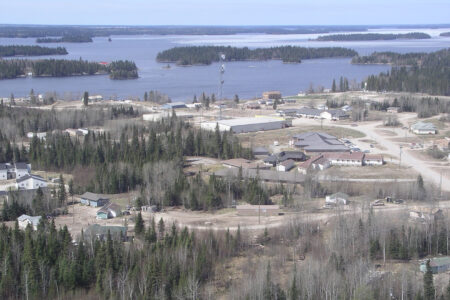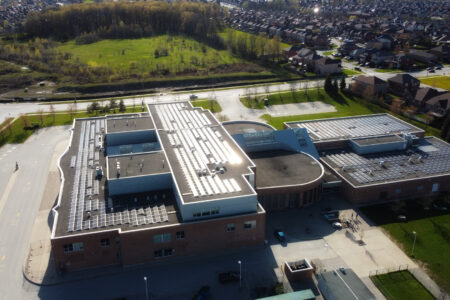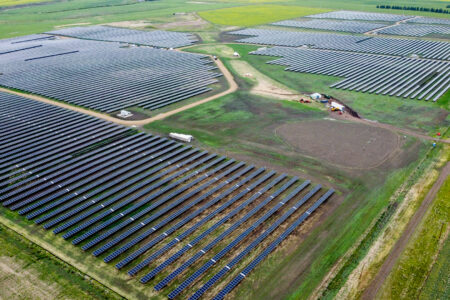
The Canadian Nuclear Association (CNA) held its annual conference in Ottawa in February. It was the most optimistic gathering in years. In one sense, this was only natural. After all, the organization was celebrating its 60th anniversary and it was the largest gathering ever, with over 900 delegates (100 of them students) and about 40 exhibitor booths. More substantively, there were three fundamental reasons for the optimism — including the prospect of a promising new product line.
First, many of the problems that bedevilled the nuclear industry in years past have essentially been resolved. The restructuring of Canada’s nuclear Crown corporation, Atomic Energy of Canada Limited (AECL), is now complete. Its reactor division was privatized to SNC-Lavalin (and is now called CANDU Energy), and the research and development division is operating under a model where AECL owns the facilities and is responsible for legacy waste, while a private company, Canadian Nuclear Laboratories, runs the day-to-day operations.
Periodic shortages of medical isotopes — caused by temporary shutdowns of the aging reactor at Chalk River, Ontario — have been addressed through a decentralized means of production, using different types of research facilities across the country. The delays and cost overruns in the refurbishment of the Point Lepreau reactor in New Brunswick are now in the past; today, Point Lepreau is running well.
Debates over new developments in Ontario, which created severe tensions between Ottawa, Queen’s Park and industry, are now over: new nuclear builds (at least of the traditional design) are highly unlikely, but Ontario is refurbishing most of its fleet in a multi-billion-dollar project that will extend the life of its reactors into the 2060s.
Second, with the above problems in the rear-view mirror, the nuclear industry can focus on a new project: the commercialization of small modular nuclear reactors (SMRs). The “small” part of SMRs is that they produce between 50 and 300 MW (compared with over 1,000 MW in traditional reactors). They are modular because there would be standardized construction at factories, with the units shipped by rail and truck to sites. This production method would be substantially cheaper than the previous model, where each new reactor is one of a kind. SMRs also include passive or inherent features that make them safer to operate: for instance, the nuclear reaction can be slowed or shut down by using gravity to drop the control rods. SMRs are still reactors: that is, they still produce electricity through the fission process, using uranium as fuel.
SMRs are not new; they have been used in nuclear submarines and aircraft carriers, as well as at research stations in Antarctica and Siberia since the 1950s. What is new is the prospect of commercialization for civilian electricity generation.
In fall 2018, Natural Resources Canada produced a road map that identified several potential uses for SMRs: replacing diesel power generation in remote communities (such as in Northern Canada), providing power for large-scale mining sites (such as in the proposed Ring of Fire in Northwestern Ontario) and supplanting coal in provinces that still rely on coal for on-grid power generation (including Saskatchewan and Alberta).
SMRs also present global export opportunities if Canada moves quickly enough. Canada has a full-spectrum nuclear industry, with an international presence and businesses engaged in mining, reactor design, reactor operation, supply chain management and waste management. The sector is well placed for the type of innovation that an effective SMR rollout requires.
Third, the political will is now in line with the industry’s desires. One of the keynote speakers at the CNA conference was Natural Resources Minister Seamus O’Regan. Unlike ministers in the past, who typically gave some perfunctory remarks and left, O’Regan had news. He announced that an SMR Action Plan, building on the 2018 road map, would be forthcoming in 2020. No details were released, but at a minimum, it ought to include the following:
- Choosing a design to build a demonstration reactor. Currently 12 SMR vendors are going through the pre-licensing design review at the Canadian Nuclear Safety Commission.
- Selecting a site to build a demonstration reactor. Chalk River, Ontario (home of the Canadian Nuclear Laboratories), would be a logical location, but Saint John, New Brunswick (home to the Point Lepreau reactor), is another possibility.
- Developing a cost-sharing arrangement between the federal government, provincial governments and industry.
It was not just the presence of the federal minister that indicated political support. The energy ministers from Ontario (Greg Rickford) and Saskatchewan (Dustin Duncan) and the assistant deputy minister from New Brunswick (Bill Breckenridge) also spoke at the conference. These three provinces had signed a memorandum of understanding on SMRs in December 2019. The MOU committed them to specific items, such as feasibility studies and public engagement. Most significantly, the MOU was premised on cooperation with the federal government on SMRs, and this was reiterated by Rickford, Duncan and Breckenridge.
The fact that there are three conservative provincial governments (two of which are suing Ottawa over the carbon tax) that want to work with the Trudeau government on SMRs (as part of a common strategy to address climate change) is nothing less than remarkable. What is even more remarkable is that the province that was frequently identified at the conference as being the next signatory to the MOU is Alberta. Alberta is another conservative government fighting Ottawa in court over the carbon tax and is led by Jason Kenney, who is Trudeau’s fiercest opponent. However, Alberta is also interested in SMRs for the oil sands and as part of its phasing out of coal-fired generation. If these strange political bedfellows are committing to cooperation on SMR, no wonder the Canadian Nuclear Association members were optimistic.
Plenty of things still need to happen if the commercialization of SMRs is to occur in the next eight to 10 years. Political agreement on design, site selection and cost-sharing as well as public acceptance will be required. Industry also needs to be able to deliver, without delays and cost overruns, on the technological promise of SMRs. Moving from computer simulations to a functioning reactor will not be easy. However, there is a window of opportunity for Canada to once again be at the forefront of nuclear technology. If it misses that window, the field will be left to the Chinese, Russians, Americans and French.
Photo: Shutterstock, by Ezume Images.









